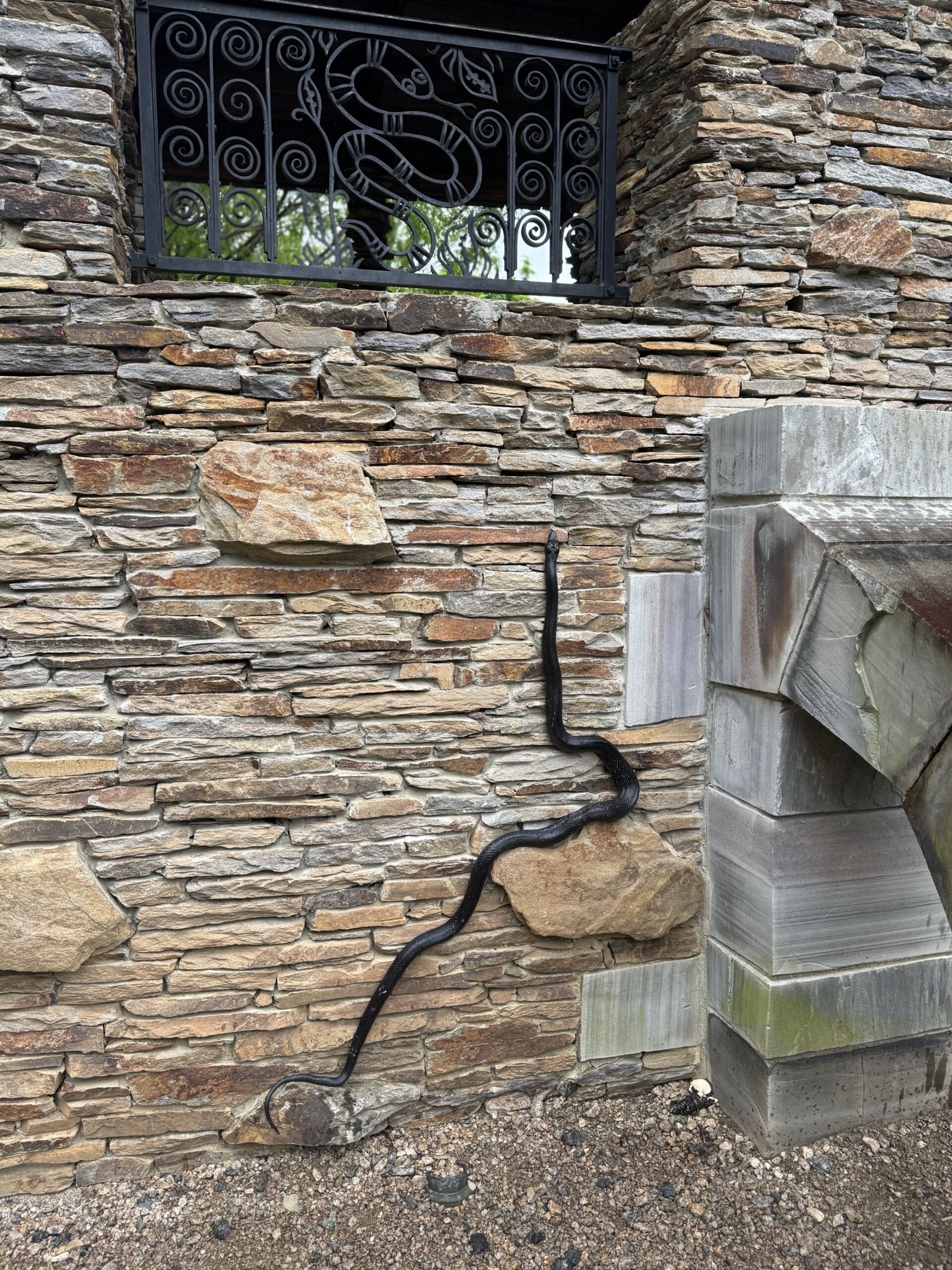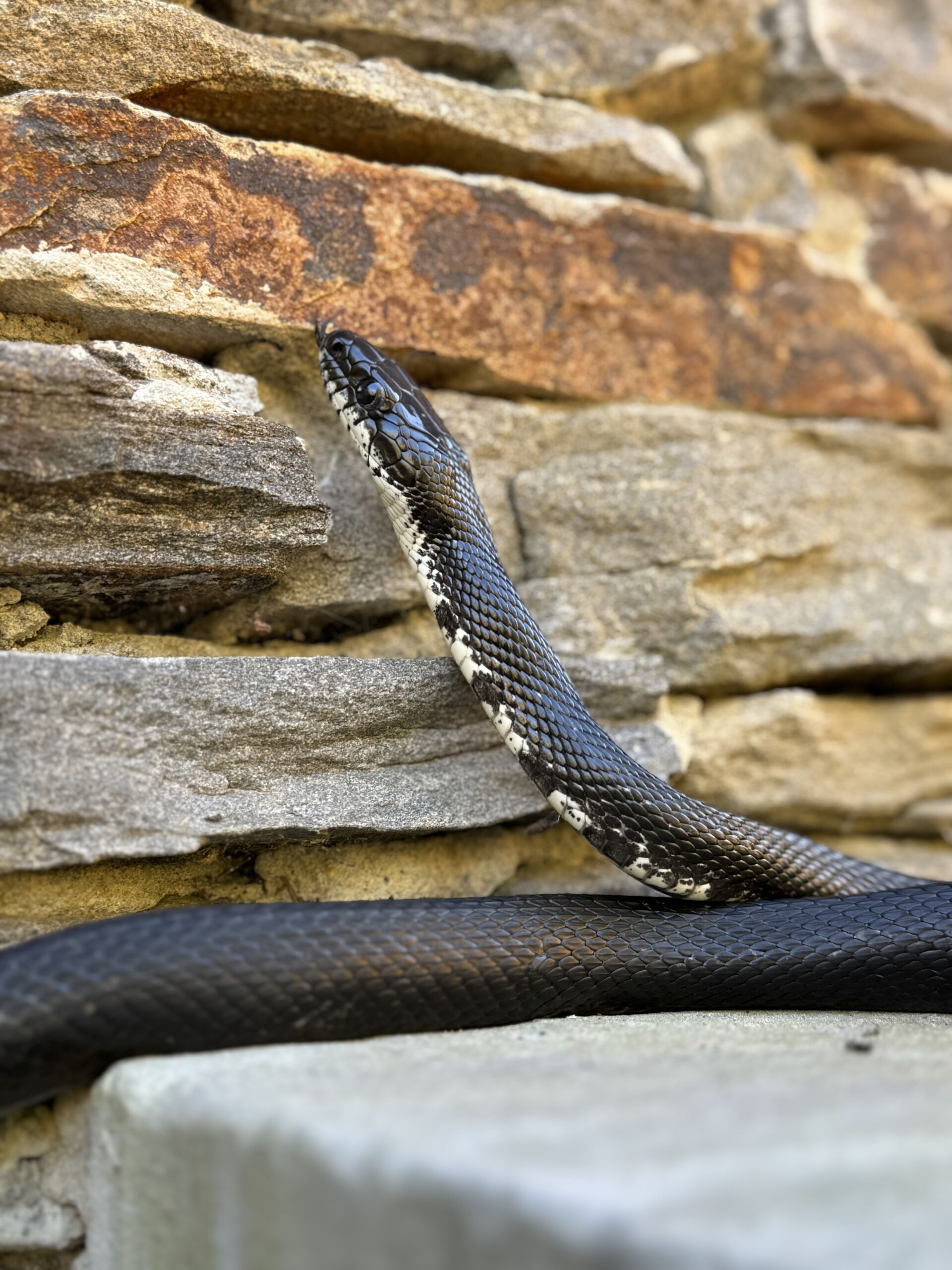


We are happy that Stowe can provide a place for these snakes and many other types of wildlife to live their lives peacefully, and if you encounter a snake during your visit, take a moment to quietly observe it. Unless the snake is actively in the way of an event, we will leave it alone and as pretty fast-moving creatures, they tend to be gone from view within a few minutes.

In the past two weeks, I’ve captured two injured eastern rat snakes and taken them to our local wildlife rehabilitators from the Gardens and the road nearby. One had tangled with prey and came out with a serious jaw injury which unfortunately ended its life, while the other had inflammation in its mouth that was successfully treated and ensured it was able to go back into the wild! Any time I am able to help and advocate for these beautiful and mischievous native reptiles, I am happy to- and I would love to see more people join me.





